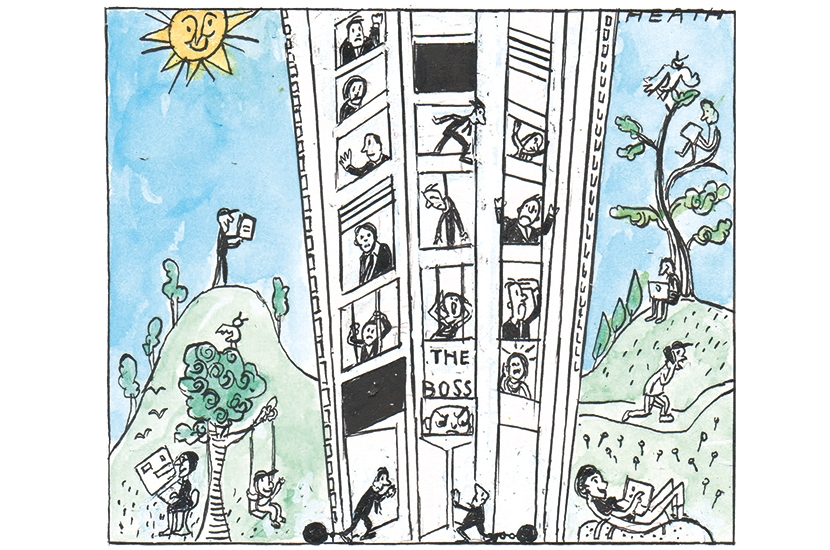The latest labour market update – published by the Office for National Statistics this morning – looks a lot like last month’s update: that’s to say, a mixed bag of news. Unemployment rose again, up 0.1 per cent between October to December, to 3.7 per cent. But this quarterly rise was once again off-set by a fall in economic inactivity: down 0.3 percentage points, largely thanks to young workers entering (or re-entering) the workforce.
Overall, it’s a trade-off worth making: the official unemployment figure has failed for some time to reflect the true number of people out of work, as over two million people of working age are thought to be missing from the labour force due to health ailments, while 5.2 million working-age people are on some kind of out of work benefit (a rise from 5.19 million to 5.21 million in August, the latest figures we have). It remains largely unknown still if workers over 50 who took early retirement during the pandemic can be lured back into the workforce, but slowly workers in all age groups (but primarily younger) are shifting from not looking for work to actively seeking it, with a ‘record-high movement of people out of economic inactivity between July to September 2022 and October to December 2022.’
Those absent workers continue to be missed: while job vacancies fell by 76,000 between November 2022 and January 2023, the total is still at 1,134,000 – not far off the record highs we saw as the economy started to reopen after lockdowns. This tightness in the labour market continues to push up wages, resulting in ‘the strongest growth rate’ for average regular pay, coming in at 6.7 per cent, between October and December last year. Capital Economics (CE) has revised its view on interest rates this morning, based on this latest set of wage data. Now that private sector wage growth has exceeded its forecast, CE has revised its expectation for a peak interest rate of 4 per cent up to a peak of 4.5 per cent.
No doubt the Bank will be nervous. It was only last Thursday that the Bank’s governor Andrew Bailey was hinting at his fears of a wage spiral. When asked directly about inflation-linked pay raises for public sector workers, Bailey came quite close to calling for pay restraint: ‘What I would urge… because we think inflation is going to fall very rapidly, [is] that is taken into account.’
But those pay disputes are far from settled. As the ONS data shows once again, these record pay increases are still falling short of the double-digit inflation continuing to plague Britain. The latest update shows real pay falling by 3.1 per cent, and regular pay falling by 2.5 per cent, in the three months leading up to December. Feeling worse off, despite rising wages, naturally leads to demands for higher pay. The Bank (and government's) fear is that might bake some inflation into the system, making it that much harder for the Bank to get back to its target of 2 per cent.
But putting wage demands aside, no forecast shows a return to inflation at target this year. Even if pressure recedes quickly, as many expect, we still have a long way to go before the inflationary impact of lockdowns and Russia's war passes us by – and before the labour market returns to anything like normal.
Join The Spectator’s Fraser Nelson, Katy Balls, Kate Andrews and a special guest as they analyse the Budget just hours after it’s announced on 15 March from 7pm. Book your tickets today.







Comments